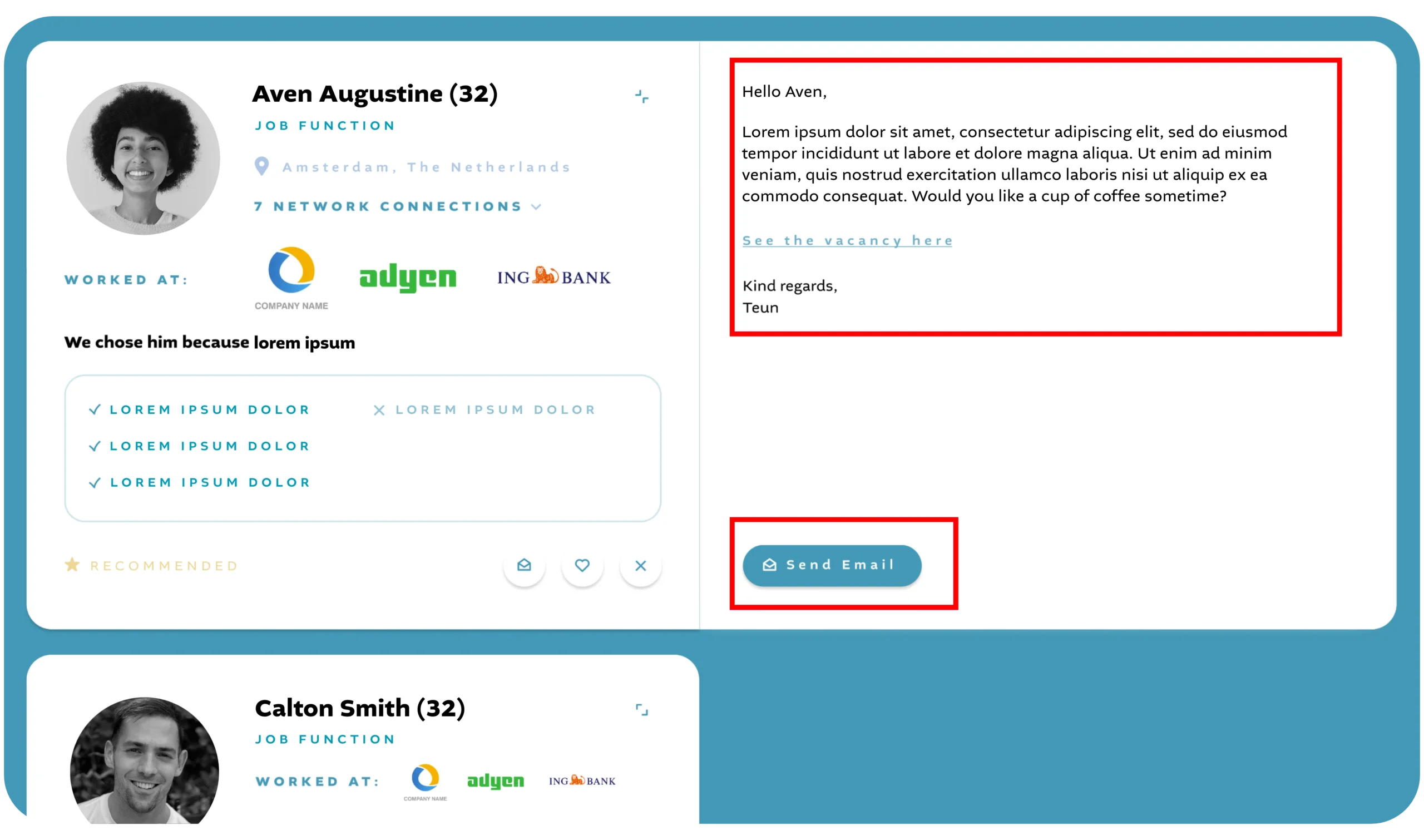In recruiting, reaching out to candidates on LinkedIn is a useful tool for attracting top talent, from operations managers to developers. Crafting a standout message is key to engaging and connecting with your target candidates effectively and professionally. This guide will walk you through the process of composing an InMail that is both impactful and respectful, tailored to professionals in any field.
Start with a personal touch. Address the candidate by name to set a connection. Make it more personal by referencing specific achievements or projects they've led that align with your company's goals. This attention to detail demonstrates genuine interest and respect, setting a positive tone from the start.
Introduce yourself with your name and role, particularly how it relates to the position you’re offering. Followed by telling them a little about your company, focusing on what would attract professionals in the target role— such as operational efficiencies for managers or innovative projects for developers. This not only introduces your company but also aligns it with the candidate's career motivations.
Show respect for their success in their career thus far. Mention specific projects or improvements or strategies they implemented that impressed you. This increases the relevance of your message and shows your respect for their contributions to their field.
Clearly explain why you are reaching out. Whether you're proposing a specific role, inviting them to discuss potential opportunities, or seeking collaboration on strategic projects, busy professionals value clarity and directness.
Describe the role by detailing some challenges they may face, the systems they can improve, and the impact their work will have. Emphasize benefits like flexible work arrangements and opportunities for career advancement or appeal to their desire to make a significant impact in something they are passionate about.
Though thoroughness is important, but brevity is key. Busy professionals appreciate concise messages that quickly highlight the key points, such as role specifics, benefits, and the potential for significant impact within your organization.
What do you want them to do next? Offer a straightforward, actionable step, whether it's responding to your InMail, scheduling a meeting, or reviewing a document. Clear calls to action reduce barriers to engagement and prompt a quicker response or further interaction.
Wrap up your message by thanking them for their time and consideration. Leave the conversation open-ended by encouraging them to share their thoughts or ask any questions they might have. This creates a relaxed atmosphere for them to freely decide how they wish to proceed, which can lead to more genuine and productive exchanges.
Much like cold calling or emailing, your first LinkedIn InMail should not be about selling, as no one will be ready for buy-in from the initial contact stage. The goal should be to start a conversation. These people don’t know you, and you need to convince them talking to you is valuable and worthwhile.
Leadinfo is a tool that identifies your B2B website visitors. See real-time companies visiting your website in addition to the names and LinkedIn profiles of the decision-makers at those companies. You can try it out with a 14-free trial today.
Before you launch your InMail campaign, review your LinkedIn profile (if you’re the sender) and make sure it is complete and up-to-date. Here are a few items to look at:
This will ensure that your profile works for you, not against you, when acquiring new leads.
The most effective way to start a conversation with a LinkedIn user is by finding common ground. LinkedIn offers a wealth of information about a person's career trajectory and professional interests. When identifying a potential candidate, review their profile, recent activities, and the pages they follow. Observe their current role, duration at their company, and previous professional experiences to discover shared interests or unique aspects of their career that pique your interest.
When writing the perfect message, use a subject line that intrigues and piques interest. Since this is the first thing a user will see, it needs to be catchy, to the point, and relevant. Greet your prospect by their first name so that they know this message is intended for them.
The body of the message should revolve around the recipient rather than you and your needs. Quickly establish why you are reaching out so that the reader is not left wondering what the point of your message is. Stick to one reason for reaching out to maintain clarity and focus.
Much like cold emailing, the length of your InMail message has a significant impact on whether someone reads your message and responds or not. Think of LinkedIn messaging as instant messaging, not emailing. Your goal in your first cold LinkedIn message is to get the recipient to respond. That’s it.
If you received a message from a stranger, you probably wouldn’t respond unless they gave you a good reason, right? Ask a question at the end of your message. It could be about their profile, something pertinent to their company or role, or their interests in a specific topic. This keeps the conversation going.

If you find crafting personalized outreach messages and managing responses overwhelming, consider using Welovehumans' automated messaging solutions. Our technology is designed to analyze and comprehend the unique profiles of each candidate, allowing us to create messages that are perfectly tailored for every interaction. This ensures that your communications are precisely aligned with each candidate’s expertise and achievements and also resonate with their professional interests. Let Welovehumans help you effortlessly connect with the right talent— because we love humans.
Crafting an effective LinkedIn InMail message requires a balance of personalization, brevity, and clarity. By following these steps, you can increase the likelihood of engaging top talent and initiating meaningful conversations. Remember, the goal is to build a connection first, which can then lead to more in-depth discussions about potential opportunities. Use these guidelines to create compelling and converting messages that stand out in a crowded inbox.